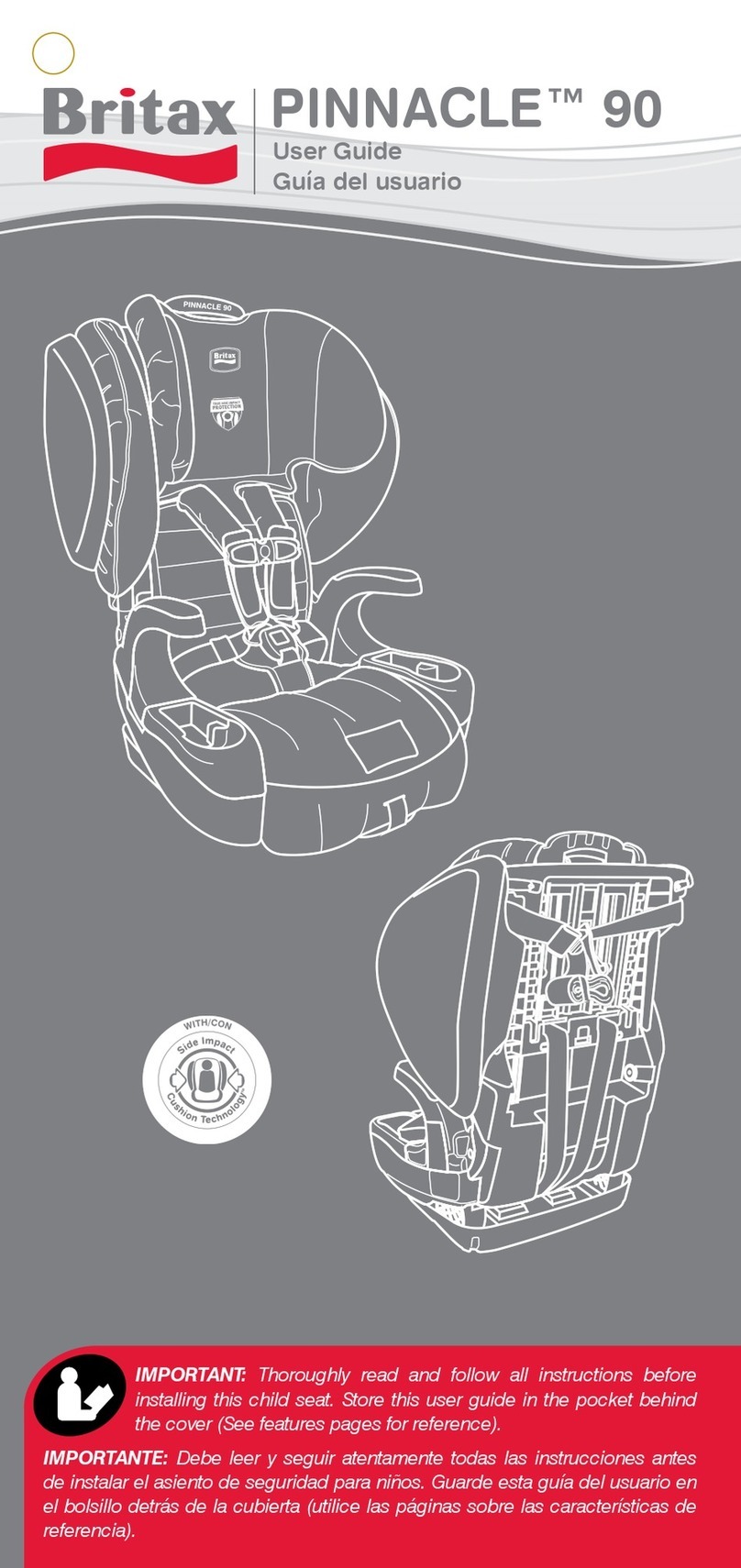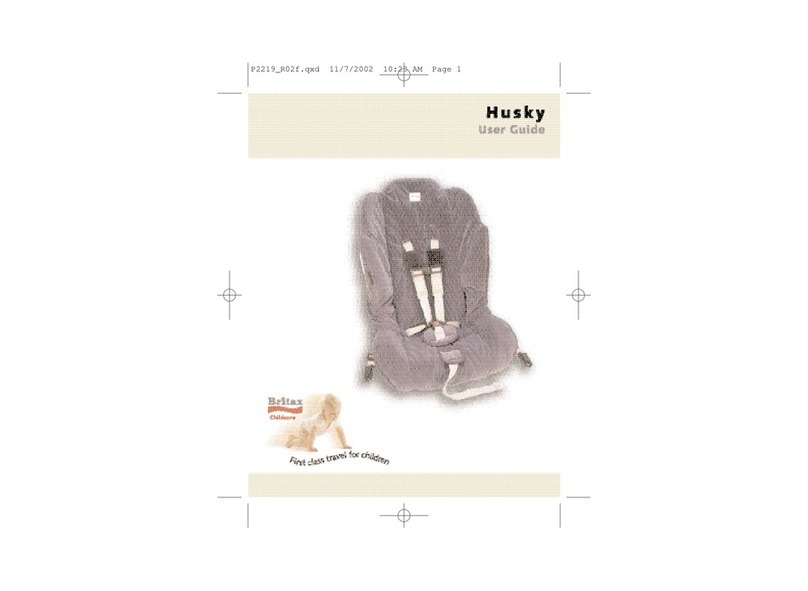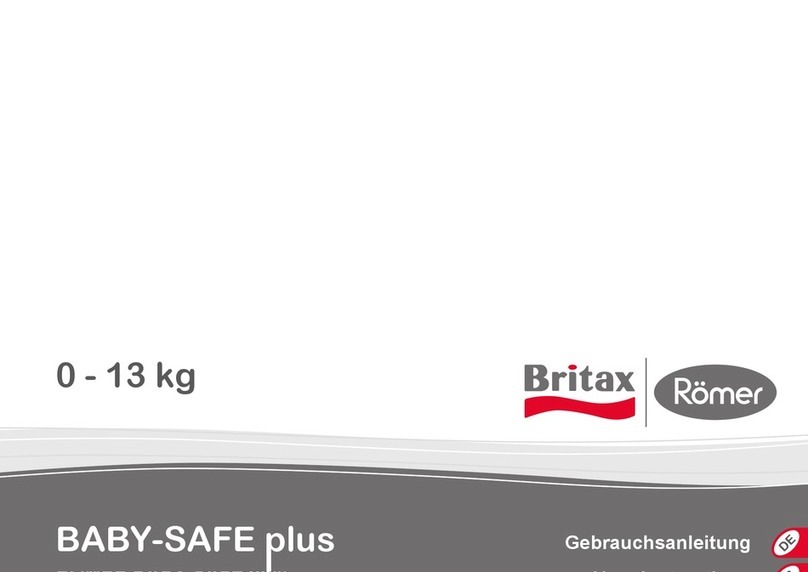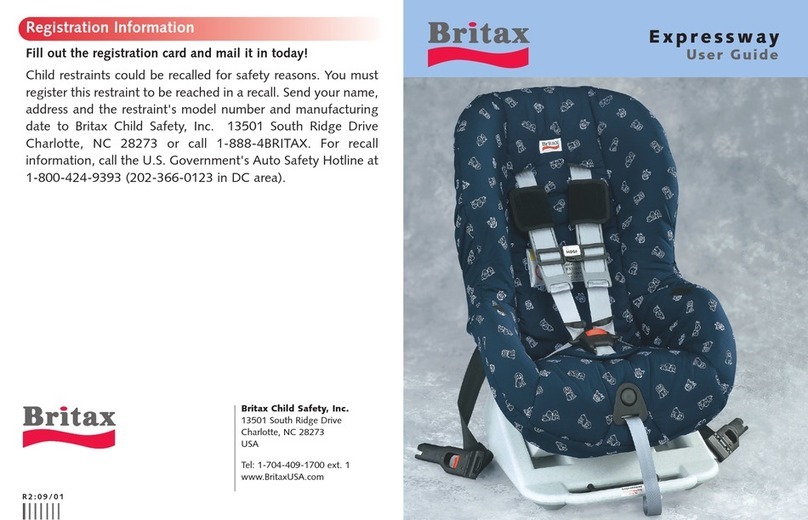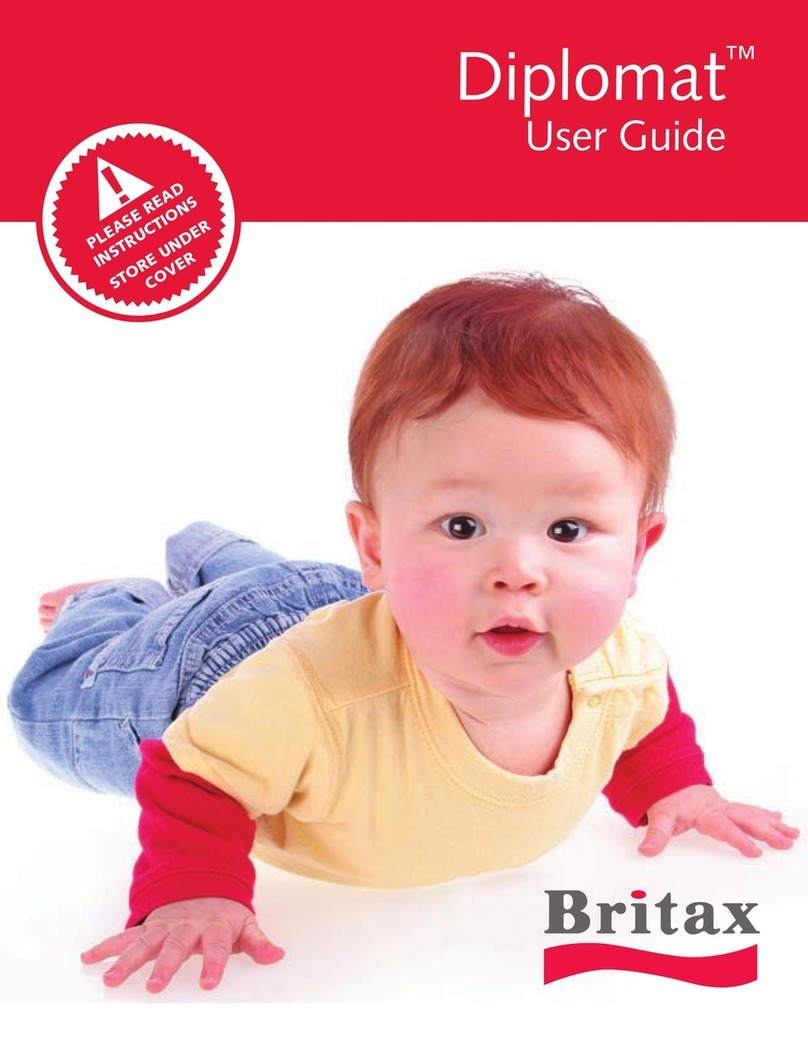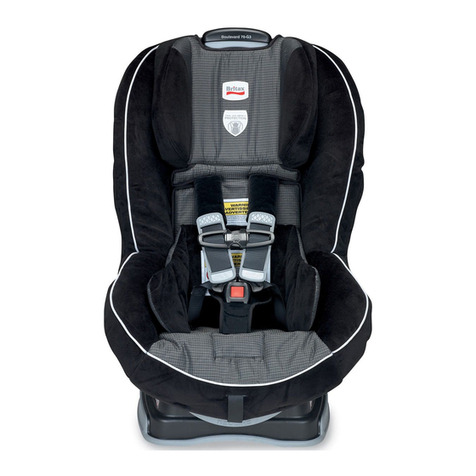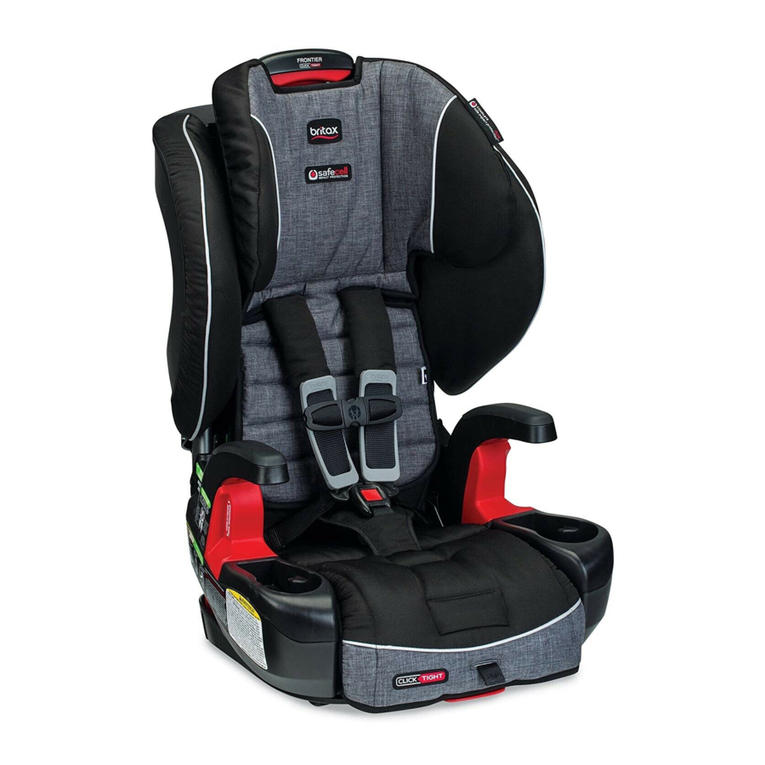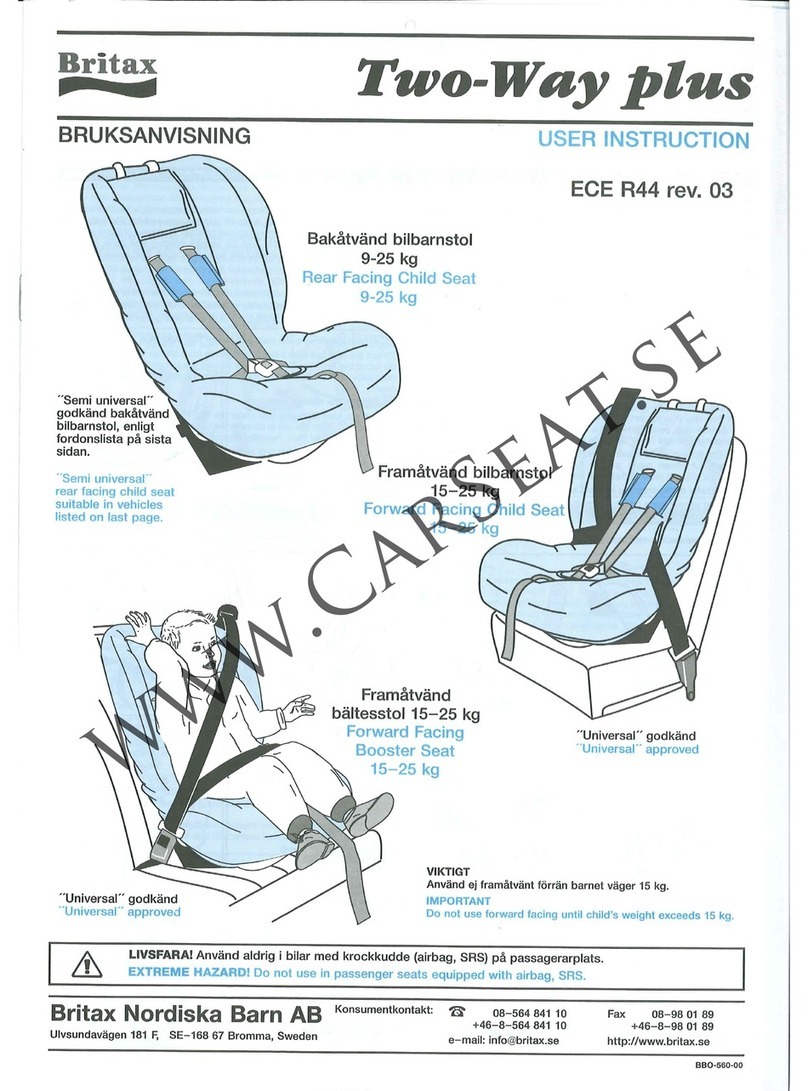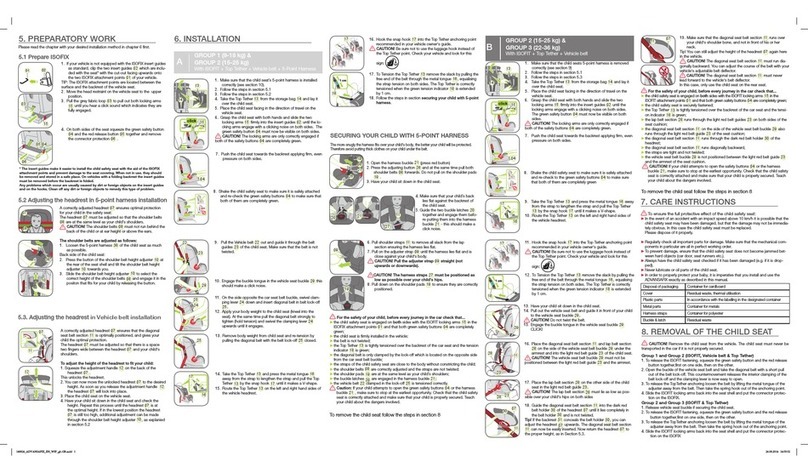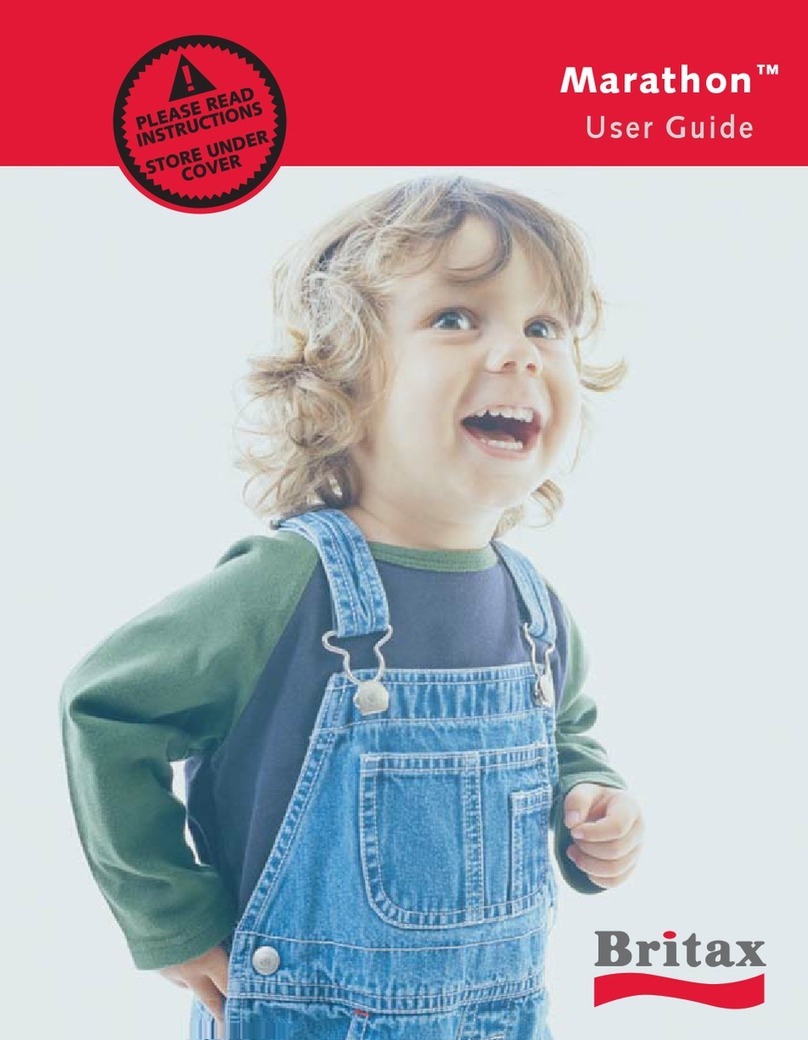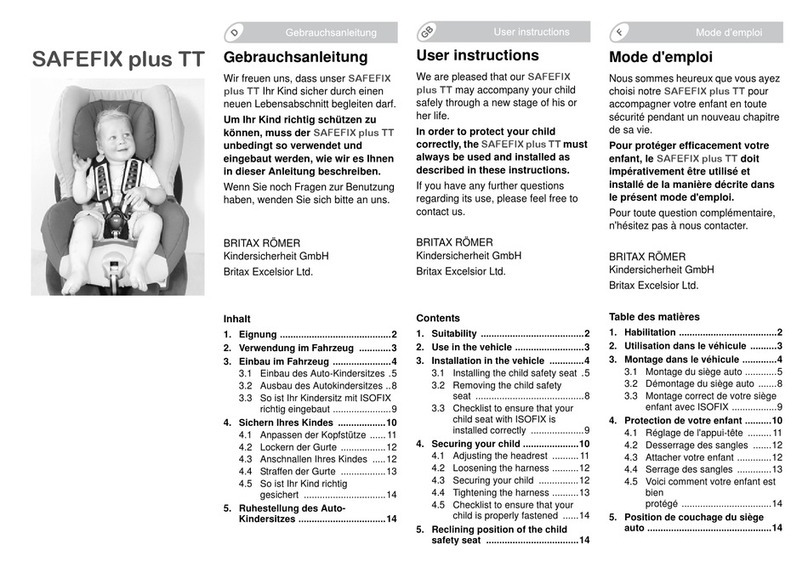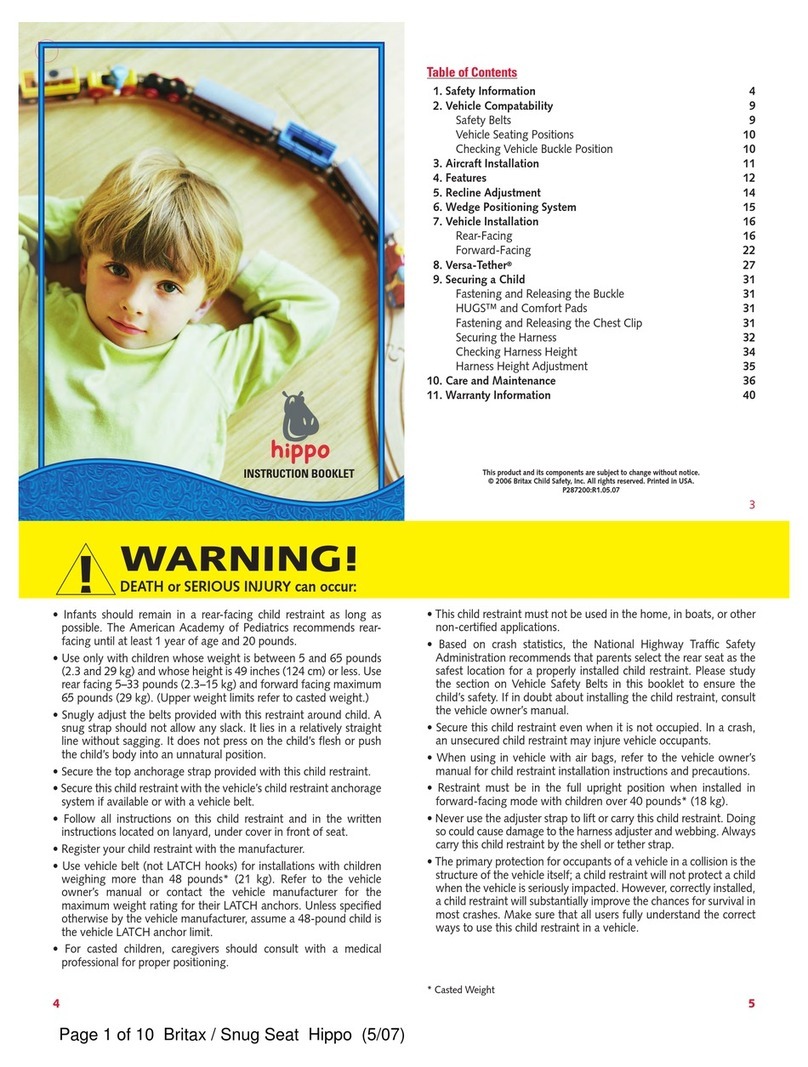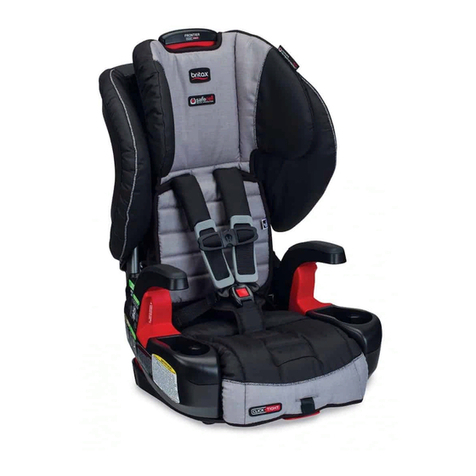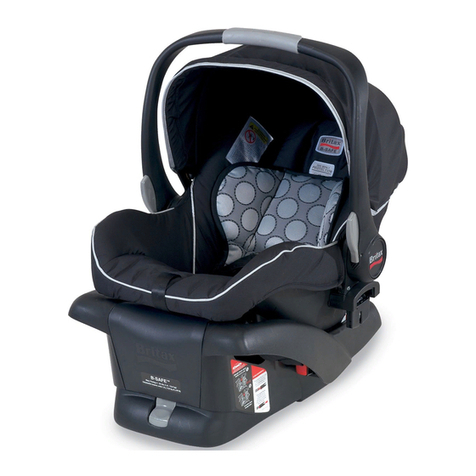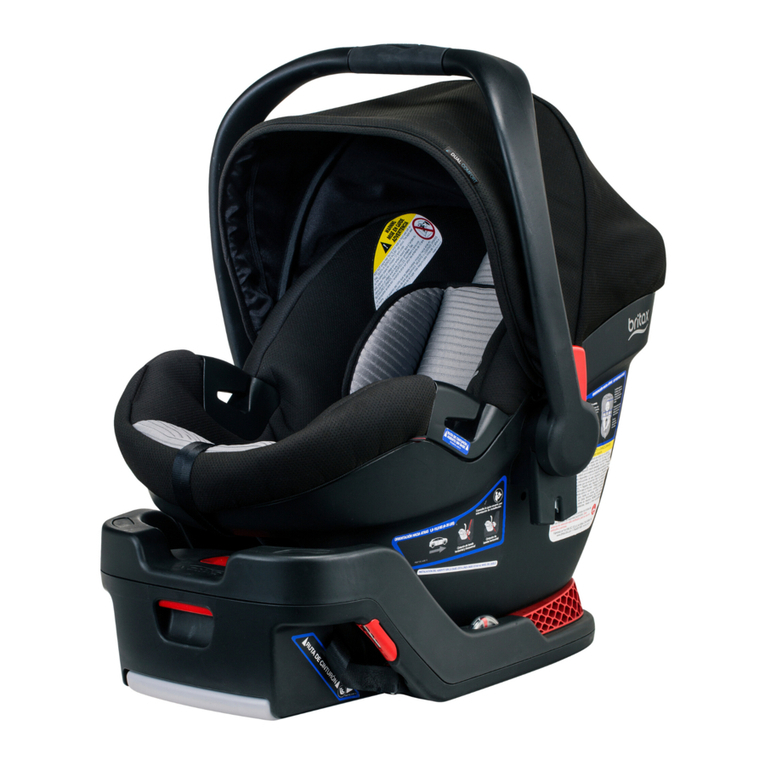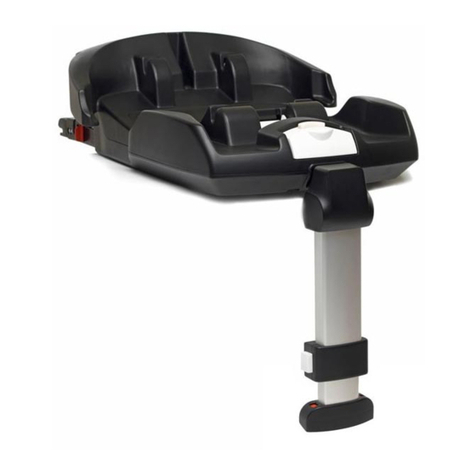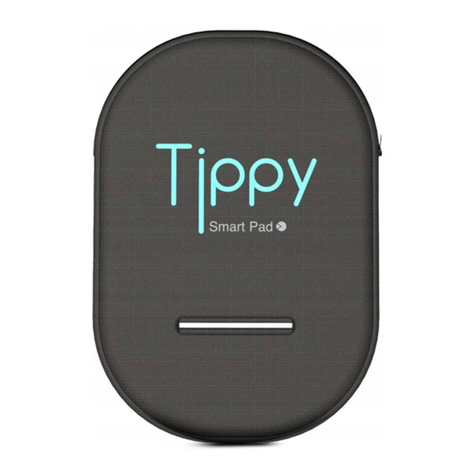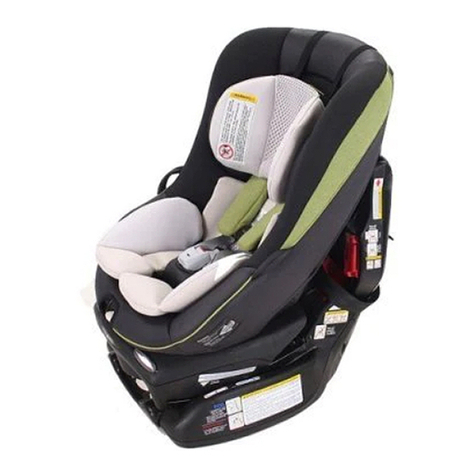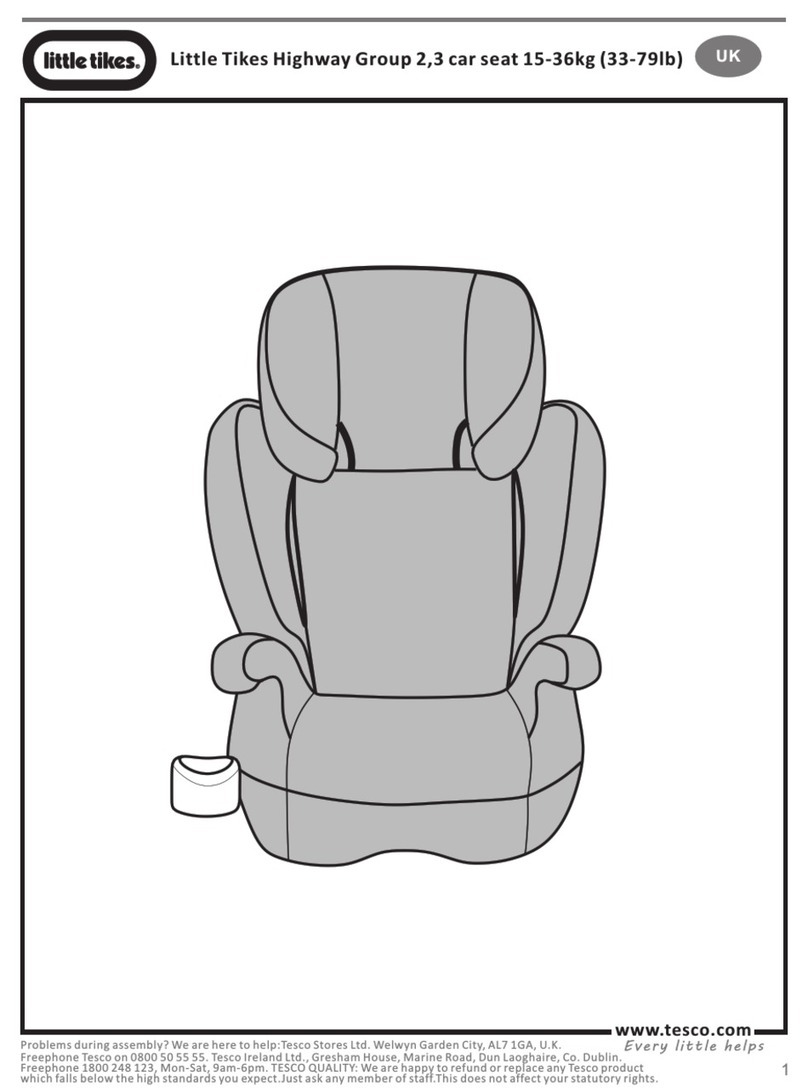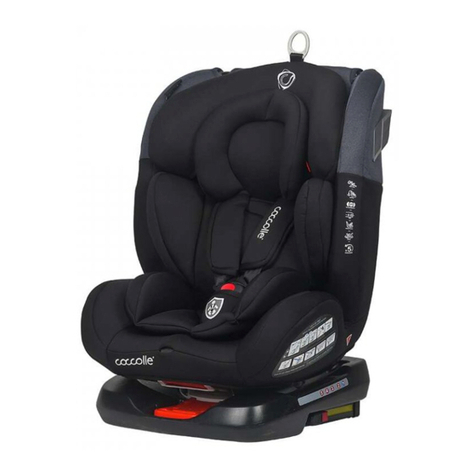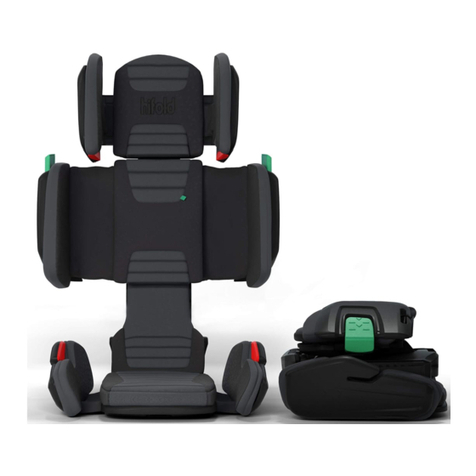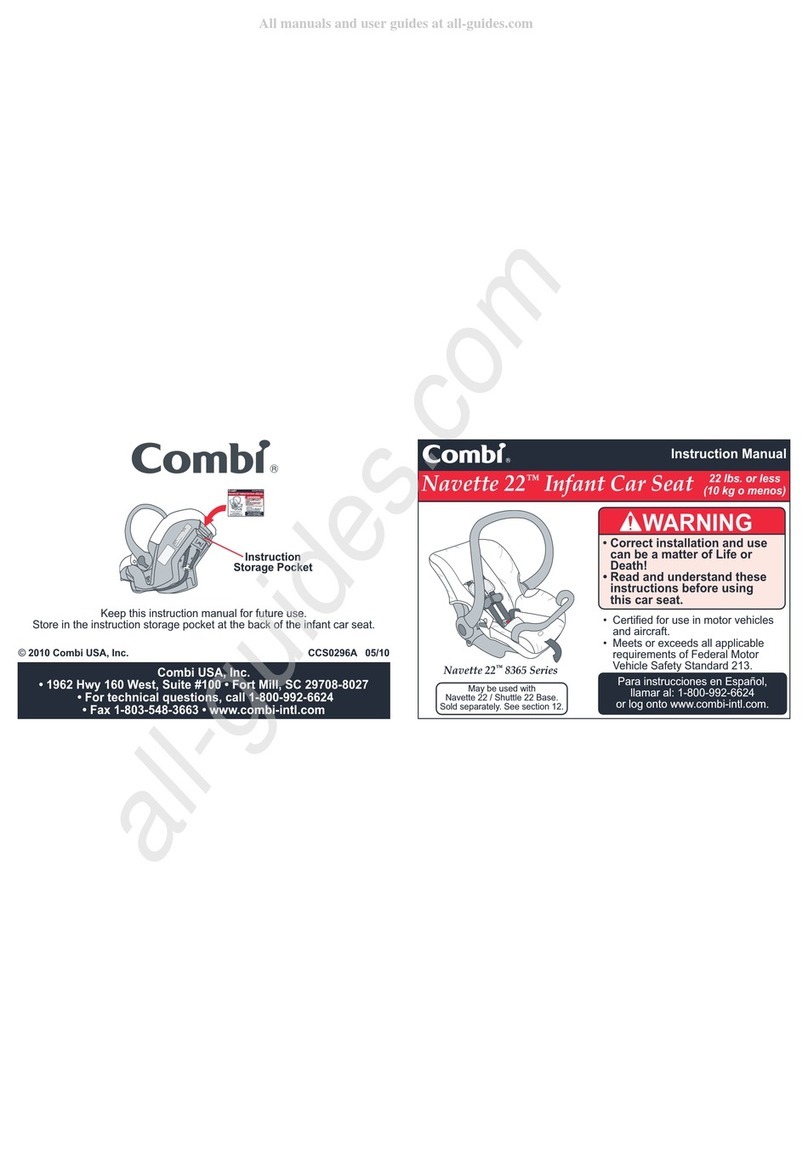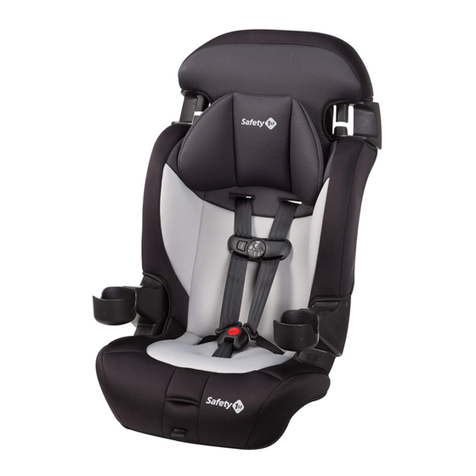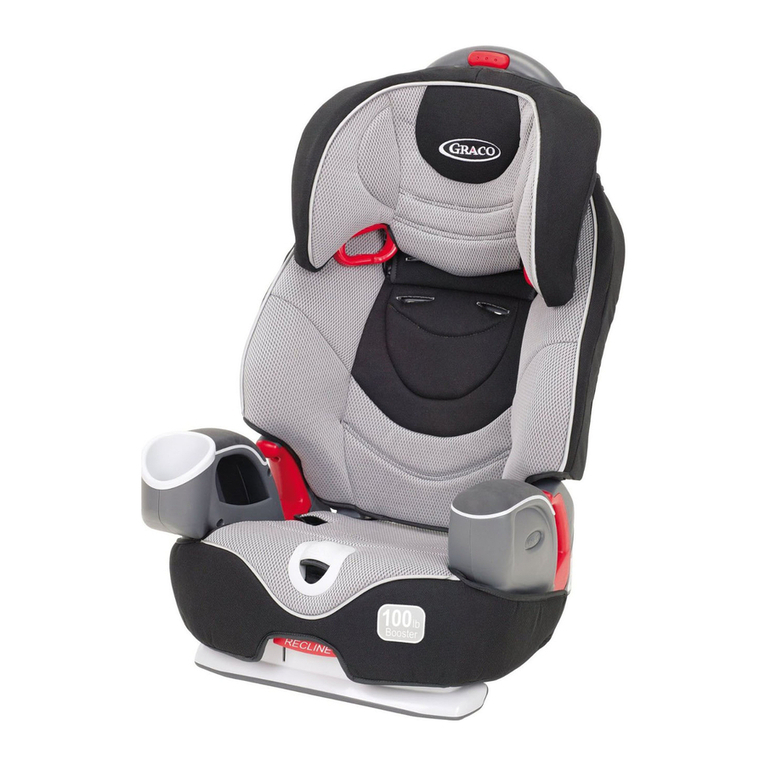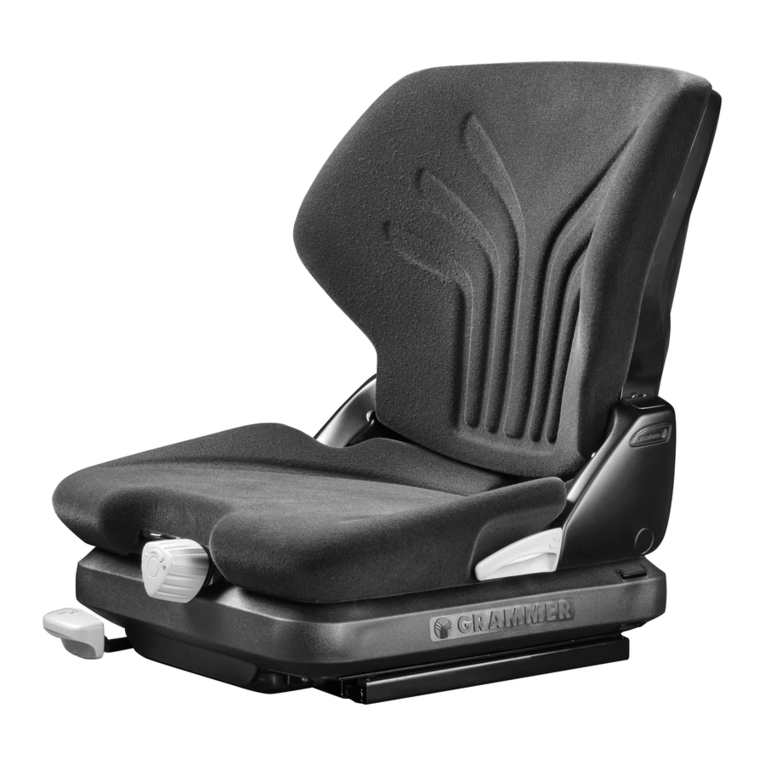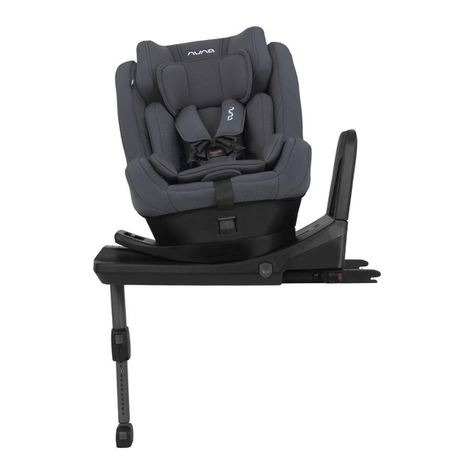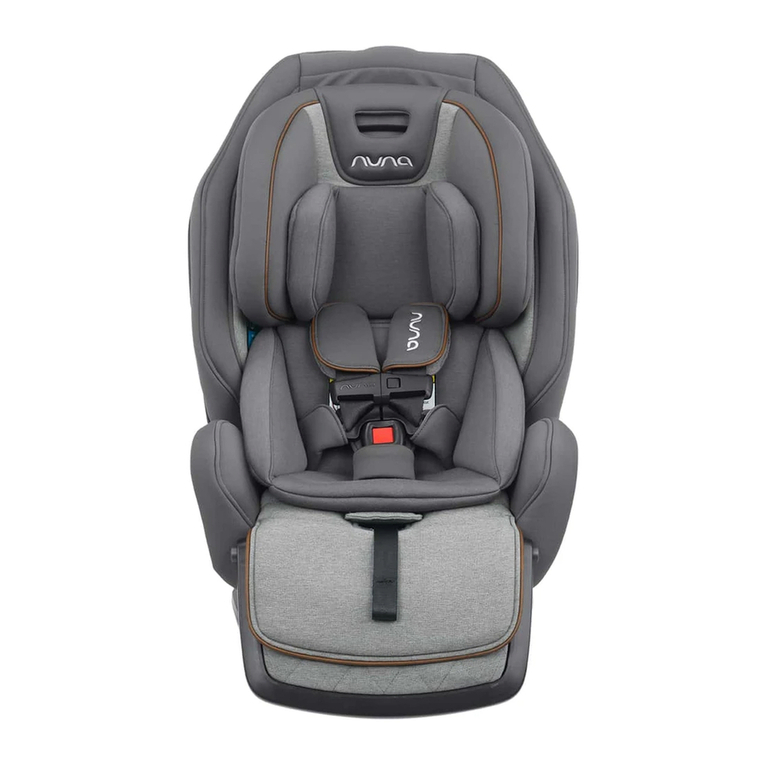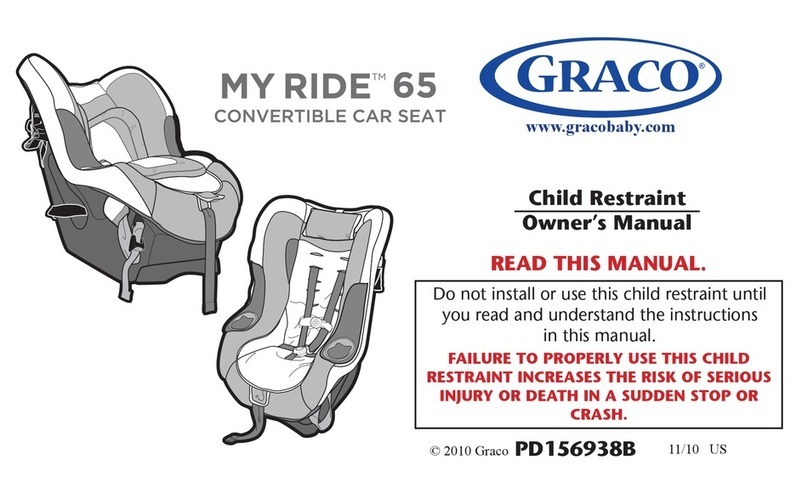2 3
Section Title
Section Title
• Use only in a rear-facing position when using it with an infant weighing
less than 20 lbs (9.1 kg) OR is less than 1 year of age.
• Use only with children who weigh between 5 and 70 lbs (2.3 –
31.8 kg) and whose height is 49 in. (124.5 cm) or less. Use rear-
facing for children who weigh between 5 and 40 lbs (2.3 – 18.1 kg).
Use forward-facing for children who weigh between 20 and 70 lbs
(9.1 – 31.8 kg) AND are at least 1 year of age.
• Snugly adjust the belts provided with this child restraint around your
child. A snug strap should not allow any slack. It lies in a relatively
straight line without sagging. It does not press into the child’s flesh or
push the child’s body into an unnatural position.
• Secure the top anchorage strap provided with this child seat.
• Secure this child restraint with the vehicle’s child restraint anchorage
system if available, or with a vehicle seat belt.
• Follow all instructions on this child restraint and in the written
instructions located in the pocket behind the cover.
• Register your child restraint with the manufacturer.
• This child seat must be reclined to position 3 when installed rear facing.
• Use the inner buckle slot when installed rear-facing.
• Use the outer buckle slot when installing the child seat forward-facing
with a child weighing 30 lbs (13.6 kg) and above or if the buckle is
under the child in the inner position.
• When installing in forward-facing mode this child seat must be in
position 1 or position 2.
• HUGS™ chest pads must be used in forward-facing mode. Removal of
HUGS™ is optional only for rear-facing mode.
• To prevent injury due to deterioration or hidden damage, discontinue
use of this child seat if it is older than seven years or has been in
a moderate or severe crash (see page 4). See Serial Number and
Manufactured Date Label on child seat (page 15).
• This child seat must not be used in the home, in boats, or other non-
certified applications.
• Based on crash statistics, the National Highway Traffic Safety
Administration (NHTSA) recommends that parents select the back
seat as the safest location for a properly installed child seat. Please
study Vehicle Seating Positions on page 13 to ensure your child’s
safety and consult your vehicle owner’s manual.
• Secure this child seat even when it is not occupied. In a crash, an
unsecured child seat may injure vehicle occupants.
• When using in a vehicle with air bags, refer to your vehicle owner’s
manual for child seat installation instructions and precautions.
• Never use the harness adjuster strap to lift or carry this child seat.
Doing so could cause damage to harness adjuster and webbing.
Always carry this child seat by its shell or tether straps.
• The primary protection for occupants of a vehicle in a collision is the
body of the vehicle itself; a child seat will not protect a child when a
vehicle is seriously impacted. However, correctly installed, a child seat
will substantially improve chances for survival in most crashes. Make
sure all users fully understand the correct ways to use this child seat
in a vehicle.
• Refer to your vehicle owner’s manual or contact the vehicle
manufacturer for the maximum weight rating for their lower anchors.
Use vehicle seat belt (not lower connectors) for installations with
children who weigh more than the vehicle lower anchor limit. Unless
specified otherwise by the vehicle manufacturer, assume a 40 lb
(18.1 kg) child is the vehicle lower anchor limit.
• Prevent the Side Impact Cushions from being punctured. Puncture
damage will cause the cushions not to perform as intended in a crash.
• The use of non-Britax Child Safety, Inc., covers, inserts, toys,
accessories, or tightening devices is not approved by Britax. Their use
could cause this child seat not perform as intended in a crash.
WARNING!
DEATH or SERIOUS INJURY can occur:



